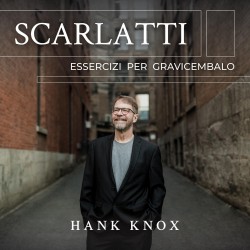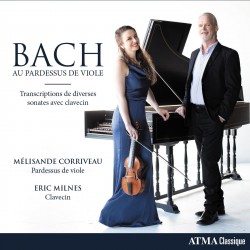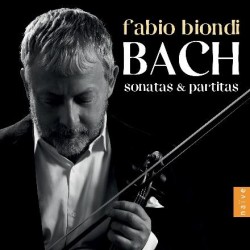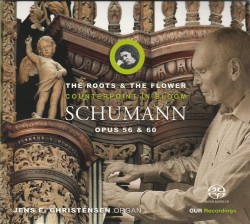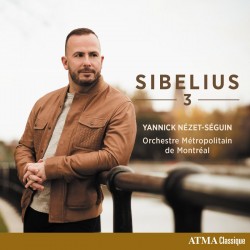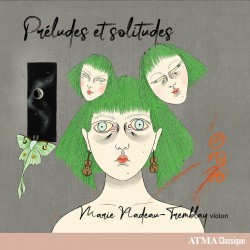 On Préludes et solitudes the Quebec violinist Marie Nadeau-Tremblay provides one of the best CDs of Baroque solo violin works that I’ve encountered (ATMA Classique ACD2 2823 atmaclassique.com/en).
On Préludes et solitudes the Quebec violinist Marie Nadeau-Tremblay provides one of the best CDs of Baroque solo violin works that I’ve encountered (ATMA Classique ACD2 2823 atmaclassique.com/en).
There’s a lightness of touch in the idiomatic playing, with a rhythmic freedom which adds character to the music and which, far from weakening the sense of line or structure actually enhances it. It’s perfectly illustrated in the Telemann Fantasies Nos.7 in E-flat Major and 9 in B Minor but is never absent in short works by Pedro Lopes Nogueira, J.H. Roman, Nicola Matteis Jr., Torelli, Thomas Baltzar and Purcell, and a terrific performance of the Passacaglia in G Minor from Biber’s Mystery Rosary Sonatas.
Nadeau-Tremblay adds her own brief Prélude improvisé to complete an outstanding disc.
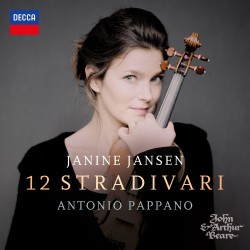 On 12 Stradivari, violinist Janine Jansen – who herself plays the 1715 Shumsky-Rode Stradivari – experiences a once-in-a-lifetime opportunity, a ground-breaking project devised by Steven Smith of J & A Beare that brought together in London 12 of the best violins of Antonio Stradivari, some not played for many years, others having belonged to the likes of Fritz Kreisler, Nathan Milstein and Ida Haendel. This resulting album, with pianist Antonio Pappano, music director of the Royal Opera House, captures the individual characters of each instrument (Decca 4851605 deccaclassics.com/en).
On 12 Stradivari, violinist Janine Jansen – who herself plays the 1715 Shumsky-Rode Stradivari – experiences a once-in-a-lifetime opportunity, a ground-breaking project devised by Steven Smith of J & A Beare that brought together in London 12 of the best violins of Antonio Stradivari, some not played for many years, others having belonged to the likes of Fritz Kreisler, Nathan Milstein and Ida Haendel. This resulting album, with pianist Antonio Pappano, music director of the Royal Opera House, captures the individual characters of each instrument (Decca 4851605 deccaclassics.com/en).
Unfortunately, there’s no information identifying the individual violins. Still, no matter; Jansen’s inspired and ravishing playing of well-known short pieces by Falla, Suk, Clara and Robert Schumann, Vieuxtemps, Tchaikovsky, Szymanowski, Ravel, Elgar, Rachmaninoff, Kreisler, Heuberger and Jerome Kern takes your breath away.
The entire project has been captured in the documentary film Janine Jansen: Falling for Stradivari.
There have been three recent CDs of the Beethoven Violin Sonatas, two of which complete a three-CD set of the entire canon:
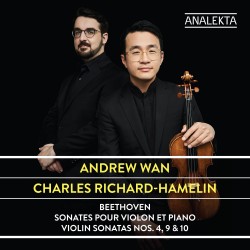 Beethoven Violin Sonatas Nos. 4, 9 & 10 with Andrew Wan and Charles Richard-Hamelin is the third issue in their Analekta series (AN 2 8796 analekta.com/en).
Beethoven Violin Sonatas Nos. 4, 9 & 10 with Andrew Wan and Charles Richard-Hamelin is the third issue in their Analekta series (AN 2 8796 analekta.com/en).
Wan’s warm, smooth and expressive playing is well-matched by Richard-Hamelin in lovely performances of the Sonatas No.4 in A Minor Op.23, No.9 in A Major Op.47 “Kreutzer” and No.10 in G Major Op.96. There’s excellent balance in a crystal-clear recording that completes a highly satisfying set.
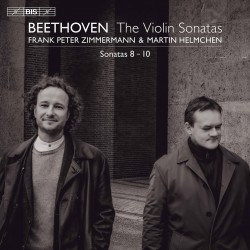 The last two sonatas are also featured on Beethoven: The Violin Sonatas Nos. 8-10, with which Frank Peter Zimmermann and Martin Helmchen complete their series for BIS (BIS-2537 bis.se).
The last two sonatas are also featured on Beethoven: The Violin Sonatas Nos. 8-10, with which Frank Peter Zimmermann and Martin Helmchen complete their series for BIS (BIS-2537 bis.se).
A lively and dazzling reading of the Sonata No.8 in G Major Op.30 No.3 opens the disc, with the Op.47 “Kreutzer” and the G Major Op.96 receiving equally animated and high-octane performances, although sensitivity and nuance are never lacking when needed.
 The Sonata No.8 in G Major, along with Sonatas No.6 in A Major and No.7 in C Minor, is also featured on a CD of the three Beethoven Sonatas Op.30, the latest release by Christian Tetzlaff and Lars Vogt on the Ondine label (ODE-1392-2 ondine.net).
The Sonata No.8 in G Major, along with Sonatas No.6 in A Major and No.7 in C Minor, is also featured on a CD of the three Beethoven Sonatas Op.30, the latest release by Christian Tetzlaff and Lars Vogt on the Ondine label (ODE-1392-2 ondine.net).
The publicity blurb says that these relatively early but completely original sonatas belong to the artists’ favourite works by Beethoven, and it shows in every bar of beautifully judged and nuanced performances, with the Adagio middle movement of the A Major Sonata in particular drawing breathtakingly beautiful playing from Tetzlaff.
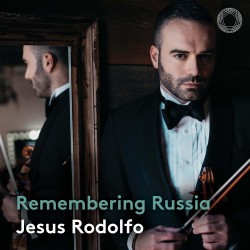 On Remembering Russia the Spanish violist Jesús Rodolfo, accompanied by pianist Min Young Kang makes his Pentatone label debut in a recital showcasing three 20th-century Russian composers all of whom left their homeland (PTC 5186 287 naxosdirect.com/search/ptc5186287).
On Remembering Russia the Spanish violist Jesús Rodolfo, accompanied by pianist Min Young Kang makes his Pentatone label debut in a recital showcasing three 20th-century Russian composers all of whom left their homeland (PTC 5186 287 naxosdirect.com/search/ptc5186287).
Six selections from Prokofiev’s Romeo and Juliet, arranged by the Russian violist Vadim Borisovsky make a strong opening to the disc. Borisovsky also made the wonderfully effective 1950 transcription of Rachmaninoff’s Cello Sonata in G Minor Op.19, a work perfectly suited to the viola’s tonal quality and range. Rodolfo’s own transcription of Stravinsky’s Suite Italienne “Pulcinella” completes the CD.
Rodolfo is a terrific player with a gorgeous tone. He is fully matched here by Kang, with the Rachmaninoff in particular drawing quite superb playing from both performers.
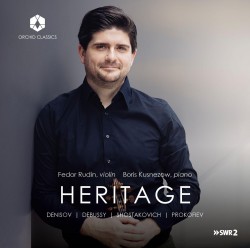 Heritage, another CD celebrating mid-20th-century Russian composers, sees the French-Russian violinist Fedor Rudin accompanied by pianist Boris Kusnezow in a recital of works by Prokofiev, Shostakovich and, in particular, his own grandfather Edison Denisov (Orchid Classics ORC100183 orchidclassics.com).
Heritage, another CD celebrating mid-20th-century Russian composers, sees the French-Russian violinist Fedor Rudin accompanied by pianist Boris Kusnezow in a recital of works by Prokofiev, Shostakovich and, in particular, his own grandfather Edison Denisov (Orchid Classics ORC100183 orchidclassics.com).
Denisov’s rarely heard Three Concert Pieces Op.15 from 1958 opens a CD which also includes his short 12-tone Sonata from 1963 and the unpublished 1972 Sonatina that marked a return to more melodic tonality. In between are Prokofiev’s Sonata No.1 in F Minor Op.80, the incomplete Moderato con moto movement rom Shostakovich’s unfinished 1945 Sonata in G Minor and Rudin’s own transcription of Denisov’s orchestration of the Prelude and Duo from Debussy’s unfinished opera Rodrigue et Chimène.
Rachmaninoff’s arrangement of Mussorgsky’s Hopak completes a terrific CD.
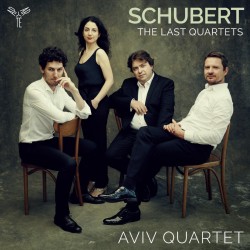 It’s difficult to imagine better interpretations of Schubert’s last two string quartets – No.14 in D Minor “Death and the Maiden” D810 and the quasi-symphonic No.15 in G Major D887 – than those by the Aviv Quartet on Schubert: The Last Quartets (Aparté AP266 apartemusic.com/?lang=en).
It’s difficult to imagine better interpretations of Schubert’s last two string quartets – No.14 in D Minor “Death and the Maiden” D810 and the quasi-symphonic No.15 in G Major D887 – than those by the Aviv Quartet on Schubert: The Last Quartets (Aparté AP266 apartemusic.com/?lang=en).
The two works were composed during the final years of the composer’s life as he struggled to come to terms with his own mortality. I can’t do any better than quote the publicity release, which says that the Aviv Quartet “brilliantly illuminates the elegiac and tragic melodies in which Schubert wrapped his torments.” That they certainly do, in stunning performances that grab you from the opening bars of No.15 and hold you enthralled until the last note of the great D minor.
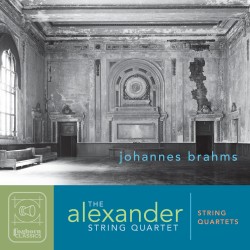 The Alexander String Quartet marks its 40th anniversary as well as the departure of founding violist Paul Yarbrough with Brahms: String Quartets, the final volume in the ensemble’s series of the complete string chamber works of Brahms (Foghorn Classics FCL2022 foghornclassics.com).
The Alexander String Quartet marks its 40th anniversary as well as the departure of founding violist Paul Yarbrough with Brahms: String Quartets, the final volume in the ensemble’s series of the complete string chamber works of Brahms (Foghorn Classics FCL2022 foghornclassics.com).
Yarbrough notes that the ASQ took decades to feel ready to record these quartets, and they certainly get to the heart of the music in powerful performances of strength and depth in the String Quartets in C Minor Op.51 No.1 and in A Minor Op.51 No.2. The String Quartet No.3 in B-flat Major Op.67 – Brahms’ favourite of the three – is bright and playful.
A transcription of Brahms’ Intermezzo in A Major Op.118 No.2 by the ASQ’s first violinist Zakarias Grafilo completes a fine disc.
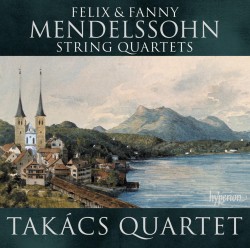 Works by the brother and sister Mendelssohns are given committed performances by the Takács Quartet on Felix and Fanny Mendelssohn String Quartets (HyperionCDA68330 hyperion-records.co.uk/a.asp?a=A1355).
Works by the brother and sister Mendelssohns are given committed performances by the Takács Quartet on Felix and Fanny Mendelssohn String Quartets (HyperionCDA68330 hyperion-records.co.uk/a.asp?a=A1355).
Fanny Mendelssohn Hensel`s String Quartet in E-flat Major from 1834 was her only work in the genre and may never have been performed in her lifetime, the score and parts not being published by Breitkopf & Härtel until 1988. It`s now favourably compared with quartets by her younger brother, Schubert and Schumann.
The central work on the disc is the String Quartet in F Minor Op.80 from 1847, written by Felix in the closing months of his life and into which he pours his grief over the death of his sister in May of that year. His String Quartet in A Minor Op.13 from 1827 completes a lovely disc.
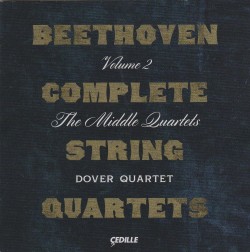 The high standard set by the Dover Quartet with its first volume of Beethoven Complete String Quartets continues with the 3CD set Volume 2 The Middle Quartets (Cedille CDR 90000 206 cedillerecords.org).
The high standard set by the Dover Quartet with its first volume of Beethoven Complete String Quartets continues with the 3CD set Volume 2 The Middle Quartets (Cedille CDR 90000 206 cedillerecords.org).
This release covers String Quartets No.7 in F Major Op.59 No.1, No.8 in E Minor Op.59 No.2, No.9 in C Major Op.59 No.3 (all commonly referred to as the Razumovsky quartets), No.10 in E-flat Major Op.74 “Harp” and No.11 in F Major Op.95 “Serioso.”
My December 2020 review of the previous volume described the performances as being full of conviction and depth, and noted that this promised to be an outstanding set. There’s certainly no reason to change those opinions.
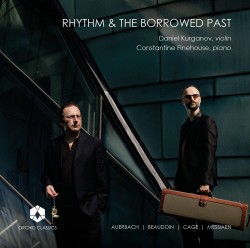 Rhythm & the Borrowed Past features violinist Daniel Kurganov and pianist Constantine Finehouse performing world premiere recordings of works by Lera Auerbach and Richard Beaudoin, along with works by John Cage and Olivier Messiaen (Orchid Classics ORC100182 orchidclassics.com).
Rhythm & the Borrowed Past features violinist Daniel Kurganov and pianist Constantine Finehouse performing world premiere recordings of works by Lera Auerbach and Richard Beaudoin, along with works by John Cage and Olivier Messiaen (Orchid Classics ORC100182 orchidclassics.com).
Auerbach`s Sonata No.3 for violin and piano and Beaudoin`s In höchster Not (in deepest need) were both written in 2005, the former a powerful and striking work that makes an immediate impact and the latter described by the composer as being marked by a constant evasion of stabilities, the contrapuntal lines in all three movements not necessarily coinciding.
Cage`s very effective Nocturne from 1947 is written in fluid notation, resulting in some performances being twice as long as others. An outstanding performance of Messiaen`s Thème et variations from 1932 completes a top-notch CD.
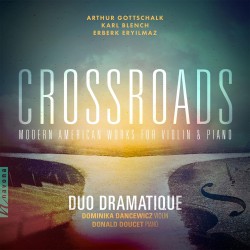 On Crossroads, the Duo Dramatique – violinist Dominika Dancewicz and pianist Donald Doucet – presents a recital of modern American works for violin and piano (Navona Records NV6380 navonarecords.com/catalog/nv6380).
On Crossroads, the Duo Dramatique – violinist Dominika Dancewicz and pianist Donald Doucet – presents a recital of modern American works for violin and piano (Navona Records NV6380 navonarecords.com/catalog/nv6380).
Arthur Gottschalk’s Sonata pays homage to the jazz violinists Stephane Grappelli, Johnny Frigo and Joe Venuti in a delightful work with echoes of “Bluesette” and “When Sunny Gets Blue,” and a Bebop last movement.
Karl Blench’s Sonata “In D” (a reference to the performers’ names) uses extreme contrasts in music meant to depict sarcasm, humour and quiet serenity, with a virtuosic moto perpetuo Finality last movement. Erberk Eryilmaz’s terrific Insistent Music draws on Eastern European folk music, with percussive patterns and explosive melodic lines.
Both players are quite outstanding in a CD simply bursting with life and energy.
 The recent pandemic has provided the impetus for numerous solo recording projects, the latest of which to reach me is Reger Three Suites for Solo Viola Op.131d played by violist Tonya Burton (Tōnsehen TSN-009 tonsehen.com).
The recent pandemic has provided the impetus for numerous solo recording projects, the latest of which to reach me is Reger Three Suites for Solo Viola Op.131d played by violist Tonya Burton (Tōnsehen TSN-009 tonsehen.com).
Reger wrote the suites in 1915. They are short four-movement works (total CD time is only 30 minutes) which look back to Bach, whom Reger idolized, but also forward with early-20th-century traits. Each movement is written in Baroque or Classical form, with Reger’s usual chromaticism balanced by lyrical melodies.
Burton calls the suites “enticing, expressive and dramatic, all the while full of humour and charm,” qualities amply displayed in her excellent performance.
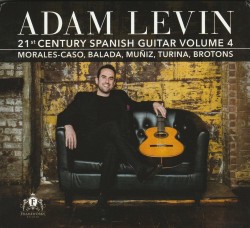 With the 2CD set 21st Century Spanish Guitar Vol.4 the outstanding guitarist Adam Levin completes his 13-year commissioning project that produced more than 30 new works (Frameworks 793888175143
With the 2CD set 21st Century Spanish Guitar Vol.4 the outstanding guitarist Adam Levin completes his 13-year commissioning project that produced more than 30 new works (Frameworks 793888175143
adamlevinguitar.com).
CD1 is the brilliant and striking Concierto de La Herradura by the Cuban composer Eduardo Morales-Caso, with the Orquesta de Extremadura conducted by Álvaro Albiach.
CD2 features world-premiere recordings of four solo works: Leonardo Balada’s Caprichos No.14; the bluegrass-influenced Portraits from the Heartland by Jorge Muñiz, written in 2015 for the bicentennial of Indiana and built on the state anthem On the Banks of the Wabash, Far Away; José Luis Turina’s Arboretum; and Salvador Brotons’ Sonata Sefardita Op.143, a gathering of songs in the Sephardic tradition.
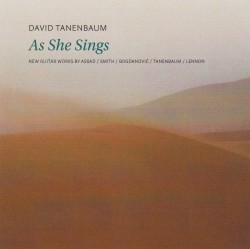 Music written specifically for the guitarist, in this case David Tanenbaum, also features on As She Sings, a CD showcasing works created for him during the past five decades (ReEntrant REN01 newfocusrecordings.com).
Music written specifically for the guitarist, in this case David Tanenbaum, also features on As She Sings, a CD showcasing works created for him during the past five decades (ReEntrant REN01 newfocusrecordings.com).
Sérgio Assad’s Shadows and Light is followed by Ronald Bruce Smith’s fascinating Five Pieces for guitar with live electronics, in which different playing styles combine with a range of electronic processing.
Music for Guitar is an early piece by Tanenbaum’s father Elias Tanenbaum. Tanenbaum is joined by mezzo-soprano Wendy Hillhouse, flute, bass and ceramic gongs for Dušan Bogdanović’s Games, seven short settings of poetry by the Yugoslavian poet Vasko Popa.
John Anthony Lennon’s elegiac title track completes an intriguing and sometimes challenging disc.
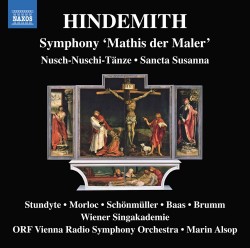 Hindemith – Mathis der Maler; Nusch-Nuschi-Tänze; Sancta Susanna
Hindemith – Mathis der Maler; Nusch-Nuschi-Tänze; Sancta Susanna

















